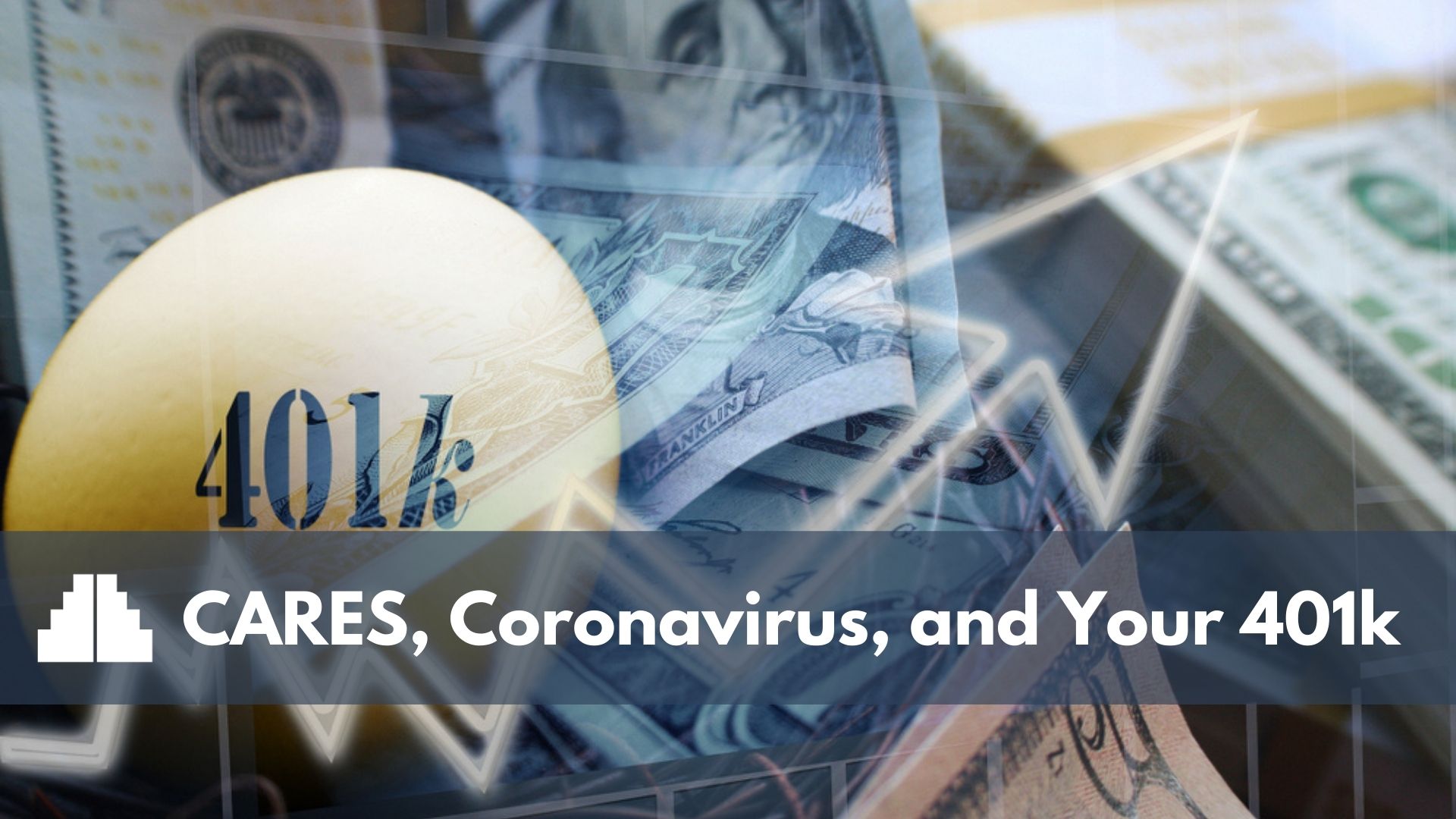
CARES, Coronavirus and your 401K
In March 2020, as part of the Coronavirus Aid, Relief and Economic Security Act (CARES), the federal government temporarily changed the rules on accessing retirement savings early. Normally contributing to a 401(k) can be a bit of a one-way street: It’s easy to get your money in, but it’s difficult to get your money out. Unless you’re at least 59½ years old — that’s when the door opens for a 401(k) withdrawal. But you could pay a steep price if you cash out a 401(k) early.
Prior to the CARES Act, there were two major consequences of early withdrawal.
Taxes. The IRS generally requires automatic withholding of 20 percent of a 401(k) early withdrawal for taxes. So if you withdraw $10,000 from your 401(k) at age 40, you may get only about $8,000. You might get some of this back in the form of a tax refund if your withholding exceeds your tax liability.
IRS penalties. If you withdraw money from your 401(k) before you’re 59½, the IRS usually assesses a 10 percent penalty when you file your tax return. That could mean another $1,000 of that $10,000 withdrawal. Between the taxes and penalty, your immediate take-home total could be as low as $7,000 from your original $10,000. [1]
In addition to that, an early withdrawal could mean less money for your future. That may be especially true if the market is down when you make the early withdrawal.
But we are not in normal times at the moment, and thanks to the CARES Act, people who have been affected by the coronavirus can take up to $100,000 out of their retirement account without a penalty through the end of 2020. They also have up to three years to pay it back without having to pay taxes on it.
So far, though, it seems that not that many people have taken advantage of this allowance and dipped into their retirement accounts. At Vanguard, for example, only about 4.5 percent of people had taken a coronavirus-related distribution as of the end of September. At Fidelity, just over 5 percent of people had accessed their retirement account as of the end of October. The amounts people are taking out have also been relatively small — roughly $10,000 to $12,000.
IMPORTANT DISCLOSURES
Material contained in this article is provided for information purposes only and is not intended to be used in connection with the evaluation of any investments offered by David Lerner Associates, Inc. This material does not constitute an offer or recommendation to buy or sell securities and should not be considered in connection with the purchase or sale of securities.
To the extent that this material concerns tax matters, it is not intended or written to be used, and cannot be used, by a taxpayer for the purpose of avoiding penalties that may be imposed by law. Each taxpayer should seek independent advice from a tax professional based on his or her individual circumstances.
These materials are provided for general information and educational purposes based upon publicly available information from sources believed to be reliable– we cannot assure the accuracy or completeness of these materials. The information in these materials may change at any time and without notice.
David Lerner Associates does not provide tax or legal advice. The information presented here is not specific to any individual's personal circumstances.
Member FINRA & SIPC.

